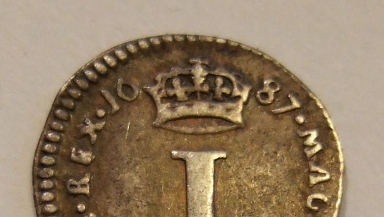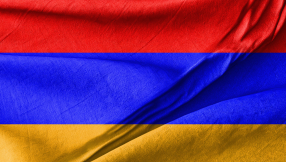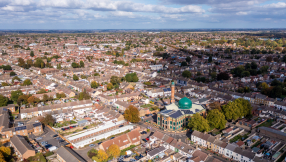
On Thursday, the Queen will perform the ancient, symbolic ceremony of a monarch handing out 'Maundy money', this year at Leicester Cathedral.
What is Maundy money?
The 'Royal Maundy' can be traced back to the 4th century, with its origin in the commandment Jesus gave after washing the feet of his disciples on night of the last supper. The commandment – also known as a 'mandatum' from which some say the word Maundy is derived – is that 'you love one another' (John 13:34).
The ceremony of washing the feet of the poor was traditionally accompanied by gifts of food and clothing. According to the Royal Mint, it seems to have been the custom as early as the 13th century for members of the royal family to take part in Maundy ceremonies.
How did Maundy money come about?
In the 18th century the act of foot-washing for the poor was discontinued and in the 19th century money allowances were substituted for the various gifts of food and clothing.
Maundy money began during the reign of Charles II, in 1662, with an undated issue of hammered coins. The coins were a four penny, three penny, two penny and one penny piece but it was not until 1670 that a dated set of all four coins appeared, the Royal Mint website says. Before this, ordinary coinage was used for Maundy gifts, silver pennies alone being used by the Tudors and Stuarts for the ceremony.
Who receives Maundy money and why?
Today's recipients of Royal Maundy are as many elderly people as make up the sovereign's age. 'They are chosen because of the Christian service they have given to the Church and community,' the Royal Mint says.
What is modern Maundy money?
Maundy money has remained in the same form since 1670, and the coins used for the Maundy ceremony have traditionally been struck in sterling silver, apart from the brief interruptions of Henry VIII's debasement of the coinage and the general change to 50 per cent silver coins in 1920.
'The sterling silver standard was resumed following the Coinage Act of 1946 and in 1971, when decimalisation took place, the face values of the coins were increased from old to new pence. The effigy of The Queen on ordinary circulating coinage has undergone four changes, but Maundy coins still bear the same portrait of Her Majesty prepared by Mary Gillick for the first coins issued in the year of her coronation in 1953,' according to the Royal Mint.
What form does Maundy money take?
Maundy Money is handed out in the form of two purses: one white and one red.
The red purse contains an allowance for clothing and provisions, and the white purse contains special silver Maundy coins which – while legal tender – are more of a symbolic gift that will be kept rather than spent.
What is the link between Maundy money and the monarch's age?
Maundy coins usually equal in pence the age of the sovereign. Henry IV began the practice of relating the number of recipients of gifts to the sovereign's age. The silver coins from the white purse consist of the same number of pence as the years of the sovereign's age.
Where is the Royal Maundy ceremony?
The ceremony has taken place all round the country over the years. For a list of locations, see the Royal Mint website.













